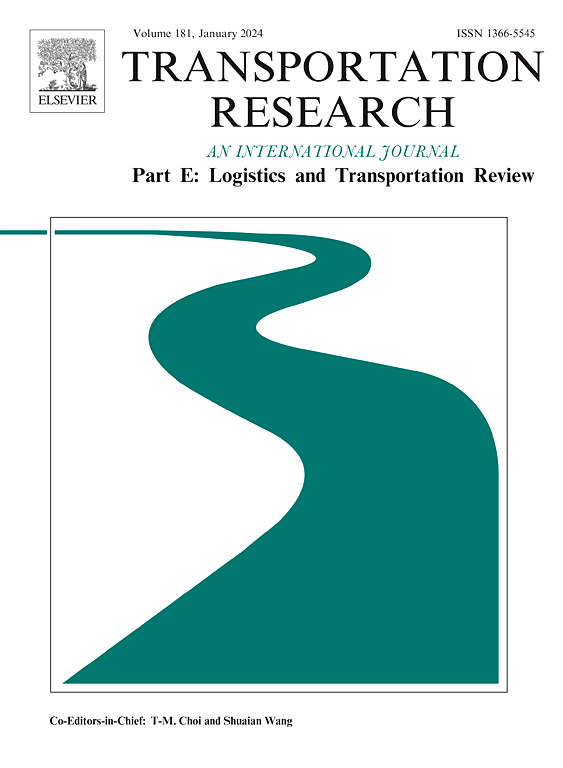Dynamic matching radius decision model for on-demand ride services: A deep multi-task learning approach
IF 8.3
1区 工程技术
Q1 ECONOMICS
Transportation Research Part E-Logistics and Transportation Review
Pub Date : 2024-11-01
DOI:10.1016/j.tre.2024.103822
引用次数: 0
Abstract
As ride-hailing services have experienced significant growth, most research has concentrated on the dispatching mode, where drivers must accept the platform’s assigned trip requests. However, the broadcasting mode, in which drivers can freely choose their preferred orders from those broadcast by the platform, has received less attention. One crucial but challenging task in such a system is the determination of the matching radius, which usually varies across space, time, and real-time supply/demand characteristics. This study develops a Deep Learning-based Matching Radius Decision (DL-MRD) model that predicts key system performance metrics for a range of matching radii, which enables the ride-hailing platform to select an optimal matching radius that maximizes overall system performance according to real-time supply and demand information. To simultaneously maximize multiple system performance metrics for matching radius determination, we devise a novel multi-task learning algorithm named Weighted Exponential Smoothing Multi-task (WESM) learning strategy that enhances convergence speed of each task (corresponding to the optimization of one metric) and delivers more accurate overall predictions. We evaluate our methods in a simulation environment designed for broadcasting-mode-based ride-hailing service. Our findings reveal that dynamically adjusting matching radii based on our proposed approach significantly improves system performance.
按需乘车服务的动态匹配半径决策模型:深度多任务学习方法
随着叫车服务的大幅增长,大多数研究都集中在调度模式上,即司机必须接受平台分配的出行请求。然而,司机可以从平台广播的订单中自由选择自己喜欢的订单的广播模式却较少受到关注。在这种系统中,一个关键但具有挑战性的任务是确定匹配半径,而匹配半径通常因空间、时间和实时供需特征而异。本研究开发了基于深度学习的匹配半径决策(DL-MRD)模型,该模型可预测一系列匹配半径的关键系统性能指标,从而使打车平台能够根据实时供需信息选择最佳匹配半径,实现系统整体性能的最大化。为了在确定匹配半径时同时最大化多个系统性能指标,我们设计了一种名为 "加权指数平滑多任务(WESM)学习策略 "的新型多任务学习算法,它能提高每个任务(对应于一个指标的优化)的收敛速度,并提供更准确的整体预测。我们在为基于广播模式的打车服务设计的模拟环境中对我们的方法进行了评估。我们的研究结果表明,根据我们提出的方法动态调整匹配半径可显著提高系统性能。
本文章由计算机程序翻译,如有差异,请以英文原文为准。
求助全文
约1分钟内获得全文
求助全文
来源期刊
CiteScore
16.20
自引率
16.00%
发文量
285
审稿时长
62 days
期刊介绍:
Transportation Research Part E: Logistics and Transportation Review is a reputable journal that publishes high-quality articles covering a wide range of topics in the field of logistics and transportation research. The journal welcomes submissions on various subjects, including transport economics, transport infrastructure and investment appraisal, evaluation of public policies related to transportation, empirical and analytical studies of logistics management practices and performance, logistics and operations models, and logistics and supply chain management.
Part E aims to provide informative and well-researched articles that contribute to the understanding and advancement of the field. The content of the journal is complementary to other prestigious journals in transportation research, such as Transportation Research Part A: Policy and Practice, Part B: Methodological, Part C: Emerging Technologies, Part D: Transport and Environment, and Part F: Traffic Psychology and Behaviour. Together, these journals form a comprehensive and cohesive reference for current research in transportation science.

 求助内容:
求助内容: 应助结果提醒方式:
应助结果提醒方式:


